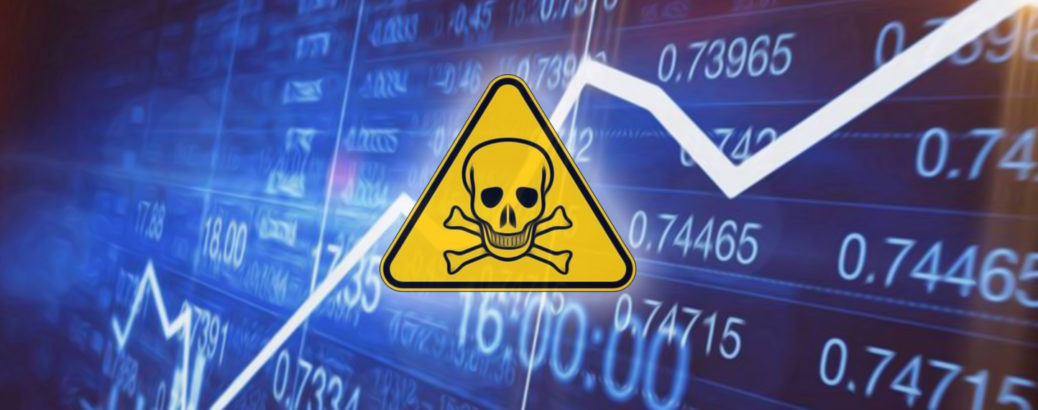Since the post-war period and the ensuing period of reconstruction, most Western countries have adopted economic tools to guide and evaluate their development, following the Industrial Revolution that began more than a century ago. In order to draw up an accounting assessment of the national economy, these countries have an indicator representing the country's wealth, the Gross Domestic Product(GDP),a clumped measure of the nation's productive forces. The countries of Western Europe, then ravaged by the Second World War, are rebounding, supported by a strong revival of the processes of reconstruction of buildings, infrastructure, land use planning, equipment of homes (television, car, refrigerator, oven, washing machine, etc.). This period, known as the "Thirty Glorious" saw the emergence of several social advances (retirements, social security), material comfort, an overhaul of distribution in the territory (rural exodus). All this contributes to GDP growth, which itself reflects a mixture of a country's production activity, its "wealth", and on which all public policy is based. This GDP has been growing exponentially overall for more than a century, with a sharp acceleration in the 1950s, and the meteoric rise of oil-based activities.
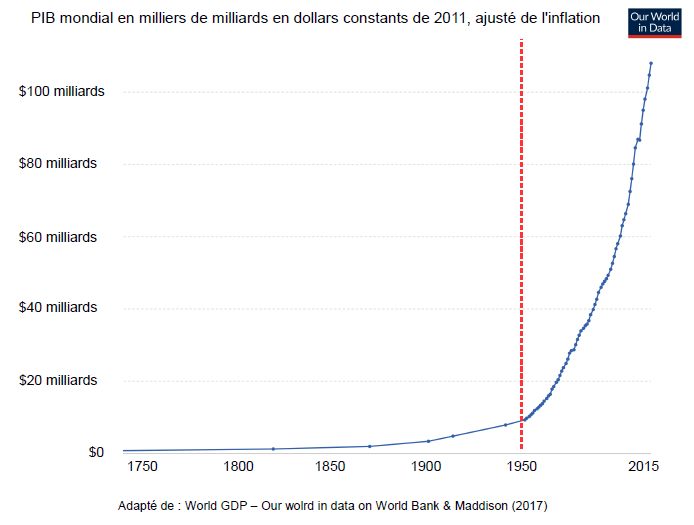
There is a great deal of criticism of this indicator and its limitations. Others focus on the nature of the factors of production that are measured by this indicator. Many works provide an argumentative look at the many flaws and biases of these instruments. These aspects are largely covered by documents dedicated to the issue, and we will allow the reader to go through these studies (see sources, for example). In this article, we will not question the nature of GDP or the factors of production; we will simply use the commonly accepted notion and draw logical conclusions from a bio-economic approach, combining systemic and biomimicry.
We can ask ourselves the question of the beneficial aspect of this endless GDP growth: is this still a positive goal to be achieved? This question, while extremely relevant, is generally brushed aside, with unconvincing arguments: "Not wanting growth is being retrograde, against progress and wanting the collapse of our societies." Just that. Yet with the growth of GDP and the productive forces of our countries comes with a plethora of harmful side effects. These take an ever-increasing place, parallel to the economic development of Man. These side effects are also exponential because they are linked to the exponential growth of our societies. This "Great Acceleration" concerns greenhouse gas releases (CO2, NO2, CH4) that cause rapid warming of the average temperature of our planet, as well as acidification of the oceans. Land is domesticated to expand our cities and build new infrastructure, biodiversity loses many habitats, forests are burned to establish new crops, often monocultures. On the socio-economic side, there are similar trends in the use of primary energy (correlated with economic growth), the explosion of the world's population, transport and international tourism. The use of water or fertilizers continues a similar path, climbing exponentially.

All these trends have a common link: the exponential economic development of humanity. Although it is very uneven between countries, and within the same country, this development leads to multiple pollutions of the same kind: from the extraction of natural resources (hydrocarbons or metals), to economic activity (plastics, heat, gas) through the food aspects (fertilisers, pesticides), health (detergents), medical, military or cosmetic, to which we can add sensory pollution (visual, heat, gas) to the food aspects (fertilisers, pesticides), health (detergents), medical, military or cosmetic, to which we can add sensory pollution (visual, hearing, hearing).
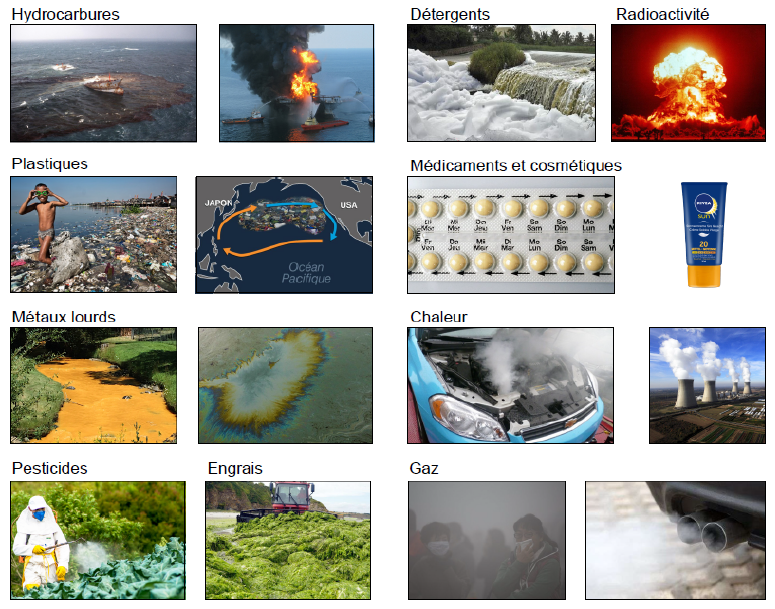
Of all these disastrous pollutions, the most worrying is that of climate change, caused by the unimaginable releases into the atmosphere of greenhouse gases from human activity. A dramatic side effect among the multitude of these existing pollutions. Not only do catastrophic effects affect humans (water, air, soil, loss of soil fertility, lung diseases, cancers, cardiovascular diseases, endocrine disorders, etc.) but it also affects other living beings, without whom the majority of economic processes simply would not exist.
As an example and reminder:
- yeasts and bacteria have been used for centuries for bakery and pastry preparations (bread, pizza, pasta), alcoholic fermentation (wine, beer, whisky, etc.), dairy and cheese fermentation or more recently biomedical production (such as antibiotics, insulin or other recombinant proteins).

- plants that produce cereals (vital fuel for humans, 2/3 of the world's cultivated land), fruits, vegetables (equally vital), nuts, textiles, wood for heating, carpentry, carpentry, or paper. Incidentally, plants perform very useful functions such as soil fertilization, water filtration, shading, moisture regulation, wind protection or the production of oxygen (vital for animals).

- Animals that perform just as many tasks useful for economic activity, pollinating insects, cats protecting rodent grains, dogs protecting herds from predators, farm animals producing milk, wool, horn, leather, eggs, feathers, pulling force, meat; or birds dispersing the seeds, transmitting messages. Let us not forget human beings, who are part of the same family.

The residues of economic activity therefore have known and devastating effects among the Living, whether bacterial, plant or animal. They poison living populations, contaminate water bodies and soils in depth, until they reach groundwater. Economic activity itself is trashing this natural wealth, massacring populations (overfishing, hunting, poaching, habitat destruction) and promoting the breakdown of trophic balances established for several millennia, which profoundly alters the dynamics of neighbouring or dependent systems. Economic growth causes devastating and toxic side effects on the Living and Humanity, similar to a poison.
What is poison? It is a harmful substance for an organism, which will cause dysfunction and bring it into a state of imbalance,pain, desolation. This concept was studied by one of the fathers of pharmacology and modern toxicology, a 16th century physician and alchemist nicknamed Paracelsus (Theophrastus Phillipus Auroleus Bombastus von Hohenheim). His work on toxicity is often summed up by the maxim: "It is the dose that makes the poison".

"All things are poison, and nothing is poisonless; only the dose makes one thing not poison"
Indeed, any compound can be toxic. It is its dose, its quantity, its concentration that will cause effects on an organism. By exceeding a certain threshold, the deleterious effects of the compound are triggered, effects that it did not possess when its dose was lower. Even today we apply this process in pharmacology, since most of the drugs we use are poisons, of which we control the dose with extreme precision, in order to benefit from the beneficial effects, and to avoid deleterious effects (side effects). All elements, however vital, are potentially toxic poisons to the body.
For example, water, oxygen or carbohydrates are vital elements for the human body. Excessive water consumption (hyper-hydration) quickly leads to osmotic shocks, kidney problems and neural damage leading to death. Excess blood glucose (hyperglycemia) characterizes diabetes, which can lead to multiple organ failures until the individual dies. Although not a compound, heat is a vital mechanism that follows the same rules. Excess heat (hyperthermia) is lethal for small variations: the normal temperature of 37.5oC becomes a hyperthermia when it rises to 39oC. So goes for many physiological parameters whose levels are kept in a thin window of values. If the levels are too low, the body does not survive. If the levels are too high, the body suffers damage and stops working.
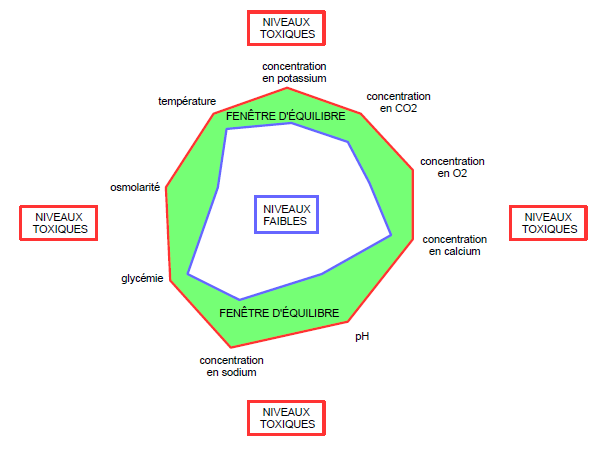
Living beings are therefore very careful with the elements that compose them, as well as those that pass through them. To control the potential toxicity of these different compounds, an organism must be able to continuously measure them, obtain information about their dose, and manage as needed. This information control uses two processes called retro-actions,fundamental phenomena in cybernetics (a discipline that studies the control of information in complex systems). All living systems are in a state of dynamic equilibrium,which will allow them to survive in an equally dynamic environment. This balance must be maintained or it will no longer be adapted to its environment, and therefore perish. Throughout the day, dynamic elements of the environment, or the functioning of the organism will lead to phases of imbalance. These will cause disturbances that must be restored, in order to return to this state of initial equilibrium.
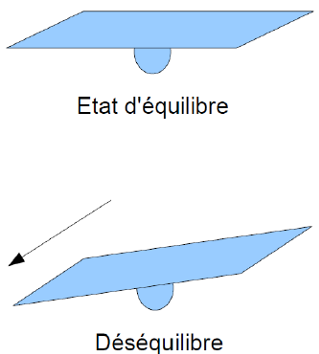
To do this, complex systems use feedback that provides them with a tool to control the imbalance information and the nature of the disruption. Negative feedback is the most common: it corrects the imbalance and usually returns the system to its original state.
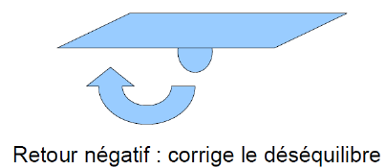
The second feedback is much less widespread: positive feedback. It has the unfortunate tendency to accentuate and amplify imbalances,which a living organism must avoid at all costs (except in very limited cases). It is therefore extremely supervised, in order to prevent any runaway. Some examples: feedback, lactose operon or explosions.
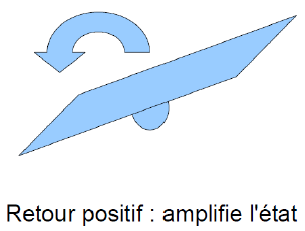
Graphically, the representation of these two mechanisms gives distinct trends, with exponential acceleration in the case of positive retro-actions, and a balance around a value (or value window) in the case of negative retro-actions.

A plethora of self-correcting retro-control mechanisms keeps the body in a stable state of equilibrium known as homeostasis. This is the state in which you are not thirsty, hungry, too hot, nor too cold etc… Your body's mechanisms constantly stabilize and correct deviations and disturbances that can affect your body. As I explained above, many parameters are subject to this vital dose control, such as pH, temperature, concentration in various molecules such as glucose, calcium, sodium or CO2. If levels weaken, the body may no longer function and behaviours must be provoked in order to raise these levels. If levels increase, this rise must be controlled at all costs to avoid toxicity, and return to the initial equilibrium values. Hunger, thirst, thermoregulation, breathing or excretion are powerful means of regulating these levels.
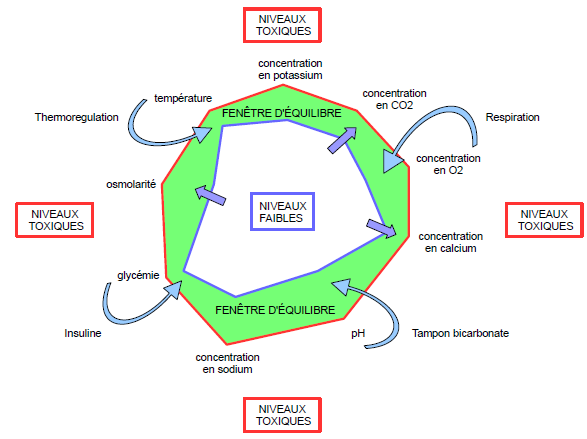
If we go back to the consequences of economic activity on the environment, they cause ever more powerful and numerous imbalances on organisms. Growth is an unstable state that is growing, becoming ever more harmful and deadly. Moreover, comparing the growth of the 1960s, 1990s and 2010s makes no sense, since it is based on a completely different basis. To grow all the productive forces of a country in reconstruction, in a rapid technological momentum, with the rise of new modes of production remains incomparable to the growth of a mature country, which is experiencing only a targeted technological deployment. It takes far more resources to increase a GDP by 3% to 2000 billion, than by 3% a GDP to 300 billion, since we are following an exponential trend. Although it has been useful in a post-war context, for reconstruction and for improving living conditions, growth has reached a threshold (from the 1970s to 1980s) where the side effects it causes are increasing. It has thus become a poison that gradually destroys the very foundations that melt it, poison all the more virulent as it was fed waves of deregulations strengthening it. Deregulation is a way to break down regulatory locks, negative retro-actions. If there is no more control, the system can grow without apparent limits. Economic growth is therefore characterized by its exponential trend, self-fuelled by positive retro-actions.

Outside, these phenomena are known to be limited by two constraints: a lack of resources to support the phenomenon of increasing self-feeding and/or poisoning of the phenomenon by generated by-products. The only way to regain control of a system that is racing into a spiral of positive retro-actions isto introduce regulations (the other way is to wait for the system to destroy everything and shut down on its own due to lack of resources/poisoning, such as an explosion).
In this article, we discussed the angle of pollution and toxicity of residues of economic activity, but resource accessibility is also a limiting factor. Our societies are built around non-renewable elements,which are extracted, extracted and transformed in exponential proportions. Supply defects are planned for the coming century and for many elements of vital importance: oil, coal, gas, sand, phosphate, copper, gold, silver, etc. Not only are concentrations weakening,but the depth of extraction increases irreparably as the most profitable mines are emptied. Here we are caught in a scissor effect: with on the one hand a scarcity of resources, on the other a poisoning by the by-products of economic activity. If we continue on this path, the phenomenon of growth will die out on its own, taking Life with it. If we want to keep control of the situation, it is necessary to add regulations to this state of advanced and deadly imbalance. It is vital to re-balance our societies by returning to levels of levies that do not exceed ecological limits. This implies that our societies must maintain the different social and economic parameters between two limits: a minimum limit on human needs and a maximum ecological limit.
Here is an example of social, economic and environmental parameters to consider, as well as a definition of the balance values to be assigned to each, respecting human needs (low limit) and ecological limits (high limit):

This notion of balancing two boundaries is found in several international research groups; Johan Rockstrom and Will Steffen proposed a framework for studying the largely outdated planetary boundaries:
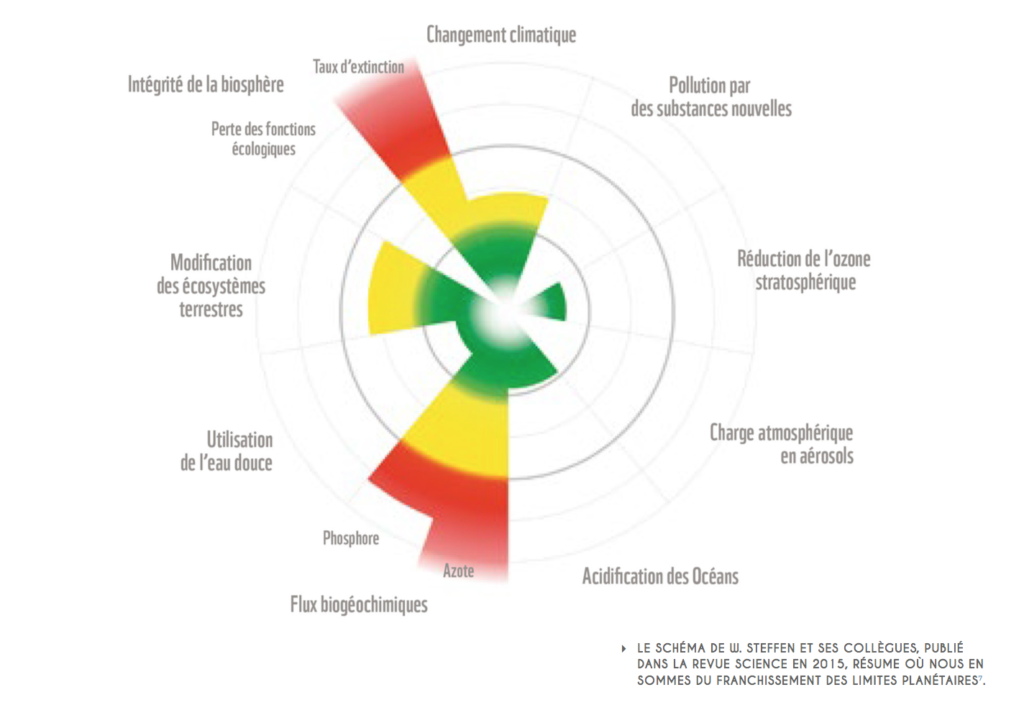
Kate Raworth proposes the "donut economy"which brings together human and environmental parameters to reside between the two social and ecological boundaries. Their representations are similar to the pattern of homeostasis exhibited above.
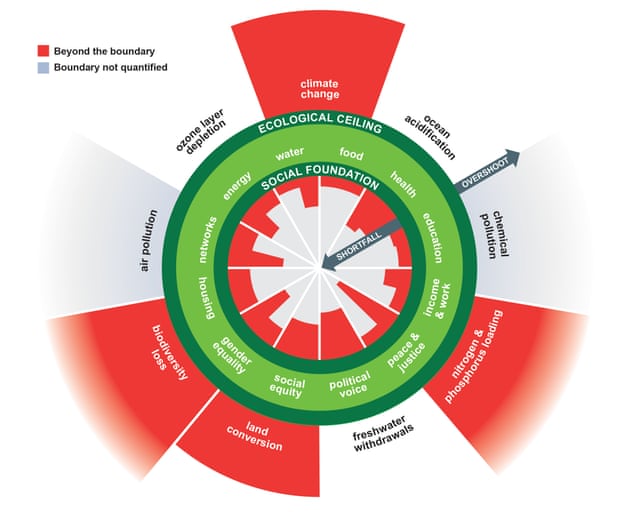
These ideas also lead to the stable growth model proposed by Herman Daly, Robert Constanza or Tim Jackson, and already envisioned by the fathers of economics David Ricardo and John Stuart Mill.
In this short work, we used the systemic aspect of the bioeconomy,which allows us to place the environment and the Living as the foundation of the economy. Unlike the traditional patterns separating economics from the environment, the economy can rather see itself as the top of a pyramid,the basis of which is the environment. Without these solid foundations that allow it to exist, it would disintegrate and disappear. The environment is the fundamental foundation for the development of Life. Without it, the economy does not exist since there are no human beings. Then, the Living that allows the Human to hatch and live in a beneficial environment (air, water, food, protection, temperature, etc.). Without the Living, the economy still does not exist. Then comes the formation of human structures such as families, clans, cities. These social ties constitute the society that can support exchanges between individuals. The economy then has the soil to be born and develop. If we continue to overlook the destructive effects on the entire pyramid that supports it, the negative impacts on the lower floors will lead to the collapse of the building. A stupid, blind way to saw the branch you're standing on.
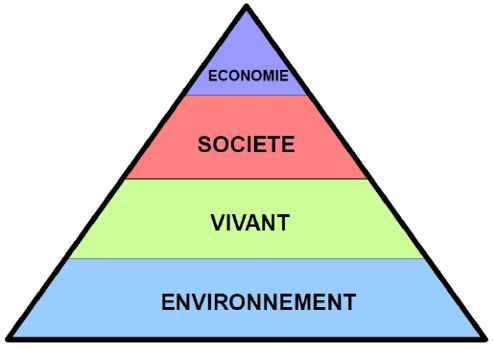
We also addressed another facet of bioeconomy, the biomimetic approach,which consists of looking at the Living and drawing inspiration from structures, functions or organizations that have been proven and selected for billions of years. So let's learn biological systems; appreciate and imitate their management of limited resources in a constrained space, thanks to cybernetics that allows them to maintain a stable state and limit toxic and polluting phenomena.
Undoubtedly, our human societies will have to adopt similar regulatory mechanisms, in order to regain substantial levels of sustainability,and reduce our current productive, destructive and harmful activity. The term decline, which today appears to be pejorative and pessimistic, simply calls for reason: we have exceeded environmental limits and we need to return to optimal levels of systemic stability. While the decline may seem shocking, this demonstration will have presented you with the far more selfish and devastating vision of growth at all costs. This desire for growth,which can be beneficial and desirable in a specific and framed context, has now become a poison, an aberration, a mystical and criminal imploration; a desire for death, for the destruction of the living. Even assuming that GDP is a coherent and relevant measure of the development of our societies (which is clearly not the case), we understand that its increase reaches toxic thresholds. Let us put an end to these past ideologies, and give true meaning to the words we use:
- economic growth, which was beneficial after the war, has become a deadly poison that we must abolish. It is an unstable state of imbalance, which should be carefully supervised, and which is not intended to last (except when the system is running out). The solutions to maintain it are utopian: decoupling GDP/resources (which does not exist, because the two are linked); productivity optimization, which is often lost by rebound effect (and subject to physical limitations already close); substitution of elements (which do not have the same chemical properties, we use the most profitable and promising ones as a priority) or the leakage forward technologist (technological innovations do not exist all the time, and require a lot of time before being deployed, if this ever happens).
- decay is not a regression to archaic living conditions. It is a rebalancing of our activity within sustainable ecological limits, regulating financial, economic, industrial, societal and political activities in order to guide them towards a return to environmental balance. Like growth, it is not intended to last and must be subtly framed. It is a homeostasis of our societies, an eco-society, on a human scale, which must be established at the national and international level, in order to preserve the precious and unique conditions that allow Life to be maintained on our planet. To dispel the negative connotation of the term "decline", it would be preferable to use the term rebalancing which, as I have just shown, remains much more appropriate to describe the process of return to sustainable environmental limits for the Living.
Given the short time we have left on the issue of climate change, as well as the many other physical and biological constraints that weigh on the Living (resource depletion, multiple pollution, mass extinction of species), it becomes decidedly urgent to work on the new economic models of tomorrow, aimed first at a rebalancing within ecological limits,and then an overhaul of our societies towards an era of post-growth. If a few actors begin to lay the groundwork for this step that humanity will inevitably have to take, it remains vital to support this approach in order to accompany and control the difficult transition that our societies will have to make, in a context constrained by resources, and marked by pollution to manage. How it is always easier to adapt when you know the rules; controlled and controlled rebalancing, although uncomfortable at first glance, is much easier to manage and live than a collapse suffered and uncontrollable.
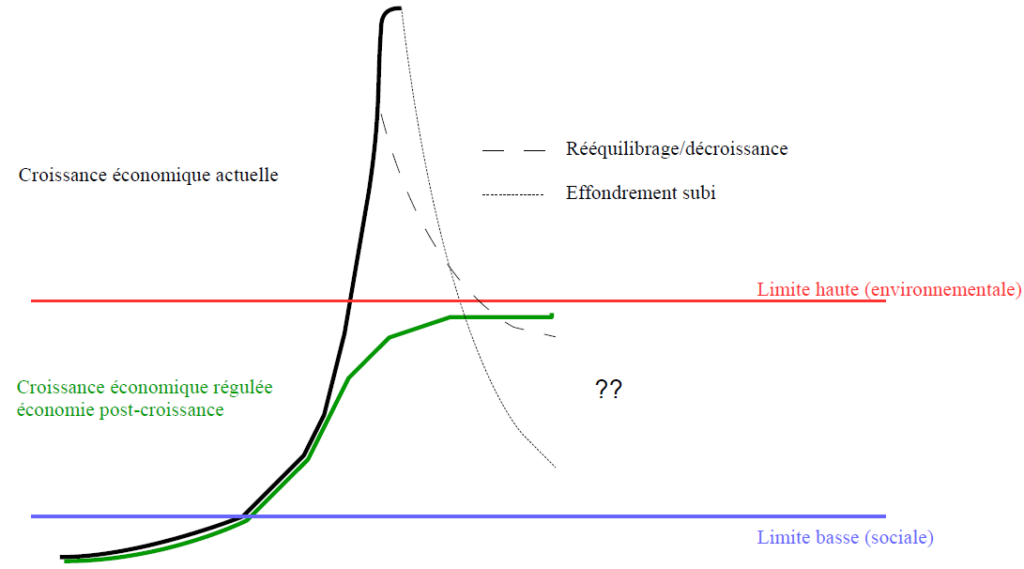
Vincent Lavilley
To learn more about the dynamic balance model we offer: https://exnaturae.ong/leconomie-a-equilibre-dynamique-eed/
ON GDP AND ITS CRITICISMS
https://www.insee.fr/fr/information/2549709
https://ourworldindata.org/economic-growth
https://www.imf.org/external/pubs/ft/fandd/basics/gdp.htm
Arthur Keller, From Growth to Strong Sustainability,https://en.calameo.com/read/0050267375dde20e2eb9e
My previous articles on the subject:
ON SYSTEMIC AND GENERAL SYSTEMS THEORY
Ludwig von Bertalanffy, General System Theory, George Braziller, 1968
ON CRITICISMS OF GROWTH/DECLINE
http://www.decroissance.org/?chemin=insultes
http://www.constructif.fr/bibliotheque/2012-2/qu-est-ce-que-la-decroissance.html?item_id=3136
https://www.cairn.info/revue-interdisciplinaire-d-etudes-juridiques-2016-2-page-73.htm
Arthur Keller, From Growth to Strong Sustainability, https://en.calameo.com/read/0050267375dde20e2eb9e
ON THE GREAT ACCELERATION / ANTHROPOCENE
Steffen et al. (2015) ; The trajectory OF Anthropocene: The Great Acceleration; Anthropocene Review, 2, 81-98
http://www.cnrs.fr/fr/la-grande-acceleration-atteint-des-sommets
ON INEQUALITY
Thomas Piketty, Capital in the 21st Century, Threshold, 2013
https://ourworldindata.org/global-economic-inequality
ON THE MASSACRE OF THE LIVING
https://ipbes.net/news/Media-Release-Global-Assessment-Fr
ON CLIMATE CHANGE
https://www.ipcc.ch/site/assets/uploads/sites/2/2019/09/IPCC-Special-Report-1.5-SPM_fr.pdf
ON POLLUTION
www.écotoxicologie.fr and the many daily documentations on the various pollutions
https://www.who.int/health-topics
http://www.fao.org/news/story/fr/item/1127210/icode/
https://openknowledge.worldbank.org/handle/10986/32245?locale-attribute=fr
ON PARACELSE AND THE NOTION OF POISON
"Die dritte Defension wegen des Schreibens der neuen Rezepte," Septem Defensiones 1538. Werke Bd. 2, Darmstadt 1965
Michael Neal, Medical Pharmacology,De Boeck, 2017
ON CYBERNETICS
Norbert Wiener; Cybernetics: or control and communications in the animal and the machine, Camb. Mr. Mass. (MIT Press), 1961 [1ère édition, 1948] .
William Ross Ashby; An introduction to cybernetics, Chapman – Hall, 1957
Joel de Rosnay; The Macroscope, towards a global vision,Threshold, 1972
ON HOMEOSTASIS AND PHYSIOLOGICAL EXCESSES
Claude Bernard, Introduction to the Study of Experimental Medicine, J.B. Baillière, 1865
https://www.universalis.fr/encyclopedie/homeostasie/
Walter B. Cannon, The Wisdom of the body, W. W. Norton Company 1932
Lauralee Sherwood, Human Physiology 3rd edition, De Boeck, 2015.
William Ross Ashby; An introduction to cybernetics, Chapman – Hall, 1957
ON EXTRACTION
Report by ancre (National Energy Research Coordination Alliance), on the state of mineral resources, and energy stocks. https://www.allianceenergie.fr/wp-content/uploads/2017/06/Ancre_Rapport_2015-Ressources_minerales_et_energie_0.pdf
ADEME (Energy Management and Control Agency) report on resource depletion, https://www.ademe.fr/sites/default/files/assets/documents/epuisement-metaux-mineraux-fiche-technique.pdf
Philippe Bihouix, The Age of Low Tech, Seuil, 2014.
ON SOCIAL AND ECO/ENVIRONMENTAL BOUNDARIES
Steffen et al. (2015) ; Planetary boundaries: Guiding human development on a changing planet;
Science Vol. 347, Issue 6223, DOI: 10.1126/science.125985
Kate Raworth, Doughnut Economics: Seven Ways to Think Like a 21st-Century Economist, Random House Business, 2017
ON THE STATIONARY ECONOMY
Herman E. Daly, Economics, Ecology, Ethics. Essays Towards a Steady-State Economy (2nd ed.). San Francisco: W.H. Freeman and Company, 1980
David Ricardo, "Letter to T. R. Malthus, October 9, 1820 ", in Collected Works, Vol. VIII: p.278-9.
John Stuart Mill, Principles of Political Economy (1st ed.). Salt Lake City, 1848 UT: Project Gutenberg.
Tim Jackson, Prosperity without Growth: Economics for a Finite Planet, Routledge, 2011
Robert Costanza, John H. Cumberland, Herman Daly, Robert Goodland, Richard Norgaard, An Introduction to Ecological Economics, CRC Press, 1997
ON BIOECONOMY
Nicholas Georgescu-Roegen, The Entropy Law and the Economic Process, Harvard University Press, 1971
René Passet, Economics and the Living, Economica, 2nd edition, 1996
ON THE DECOUPLING OF GDP/RESOURCES
Wiedmann et al. (2015) ; The material footprint of nations, Proceedings of the National Academy of Sciences May 112 (20) 6271-6276; DOI: 10.1073/pnas.1220362110
Ward et al. (2016) ; Is Decoupling GDP Growth from Environmental Impact Possible?, PLoS ONE 11(10): e0164733. https://doi.org/10.1371/journal.pone.0164733
And the correlation between GDP and energy: https://jancovici.com/transition-energetique/l-energie-et-nous/lenergie-de-quoi-sagit-il-exactement/
or GDP and greenhouse gas (GHG) emissions: https://jancovici.com/changement-climatique/economie/la-croissance-economique-fait-elle-de-leffet-de-serre/
ON PRODUCTIVITY
http://www.oecd.org/sdd/productivity-stats/oecd-compendium-of-productivity-indicators-22252126.htm
https://www.insee.fr/fr/statistiques/3567821?sommaire=3567845
Charles du Granrut, Slowing Productivity Gains, Technology at the Heart of the Debates,in Futuribles 2017/2 (No. 417), pages 61 to 78(https://www.cairn.info/revue-futuribles-2017-2-page-61.htm)
ON THE REBOUND EFFECT
William Stanley Jevons; The coal question,McMillan and Co, 1866.
ON SUBSTITUTION
Any first year chemistry book

